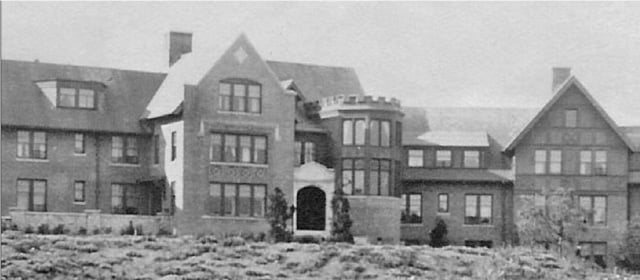Franke Tobey Jones Celebrates its Centennial This Year

As we celebrate our Centennial, throughout the year we’ll be sharing news of our Centennial events and facts about the 1920s and specifically 1924.
Looking Back…The Roaring 20’s!
Hemlines, the Stock Market and Lindbergh all went up!
This was a period in American history of dramatic social, economic and political change. For the first time, more Americans lived in cities than on farms. The nation’s total wealth more than doubled in the 20’s, gross national product expanded by 40 percent and unemployment remained low. This economic engine swept many Americans into an affluent “consumer culture” in which people nationwide saw the same advertisements, bought the same goods, listened to the same music and did the same dances. Many Americans, however, were uncomfortable with this racy urban lifestyle, and the decade of Prohibition brought more conflict than celebration.
One of the most successful and best known bootleggers in the Pacific Northwest region during Prohibition was Roy Olmstead. A former lieutenant in the Seattle Police Department, he began smuggling alcohol from Canada while still on the force.
Perhaps the most familiar symbol of the “Roaring Twenties” is the flapper: a young woman with bobbed hair and short skirts who drank, smoked and said “unladylike” things. In reality, most young women in the 1920s did none of these things, though many did adopt a flapper wardrobe.
Moviegoing became an American pastime, especially after the emergence of “talkies.” By the decade’s end, 80 million people flocked to cinemas weekly, with radio and magazines boosting interest in the stars on the screen.
Starting in 1920, the 19th Amendment to the U.S. Constitution guaranteed the right for women to vote, though it would be decades before Black women in the South could fully exercise their right to vote. However, it was a decade earlier, in 1910, when voters in Washington approved Amendment Six to the State Constitution granting women the right to vote. Millions of women worked and could afford to participate in the burgeoning consumer economy.
By the mid-1920s more than 60 percent of American households had electricity. And with this electrification came new machines and technologies like the washing machine, the freezer and the vacuum cleaner that eliminated some of the drudgeries of household work.
In May 1927, Charles Lindbergh made the first nonstop flight from New York City to Paris, a distance of 3,600 miles, flying alone for 33.5 hours. This was the first solo transatlantic flight and the longest at the time by nearly 2,000 miles. It became known as one of the most consequential flights in history and ushered in a new era of air transportation between parts of the globe.
On July 16, 1924, the Franke Tobey Jones Home cornerstone was laid on a spectacular five-acre site with views of Commencement Bay and Mount Rainier. With a wheelbarrow and spade, Mrs. Franke Tobey Jones, at the age of 80, presided over the ceremony. On March 24, 1925, the Home opened, a beautiful Tudor-style building with private accommodations for up to 65 residents. It was soon recognized as one of the most outstanding facilities in the nation.
The decade saw the number of passenger cars more than triple, which stimulated the expansion of transportation infrastructure and the oil and gas industries. Cars also gave young people the freedom to go where they pleased and do what they wanted. What many young people wanted to do was dance: the Charleston, the cake walk, the black bottom and the flea hop were popular dances of the era, and more than 100 million records were sold in 1927.
For some, the Jazz Age of the 1920s roared loud and long, until the excesses of the Roaring Twenties came crashing down as the economy tanked at the decade’s end. The stock market crash of October 1929 effectively marked the end of the Roaring Twenties.
![Franke Tobey Jones [logo]](https://www.franketobeyjones.com/wp-content/themes/franktobyjones2017/images/logo.png)